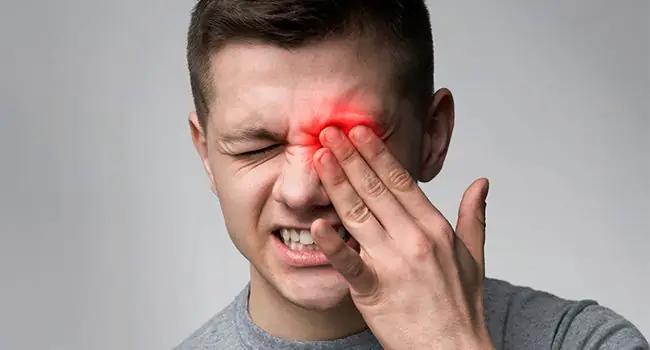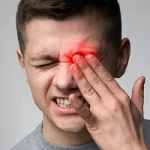A stye in the eye is an inflammation of the eyelid accompanied by a small pus collection caused by the Staphylococcus bacteria. It is also known as a hordeolum. A stye in the eye is usually not a cause for alarm and mostly clear up on its own within a week without any medical attention. The lump is often red and painful, resembling a boil or pimple.
While most styes grow on the outside of the eyelid, some do form on the inside. External styes, or styes on the eyelid, will turn yellow and ooze pus. On the other hand, internal styes, or styes that occur within the eyelid, are more painful. A gentle warm compress against the stye helps it to release pus and relieves pain and swelling.
A stye in the eye can reoccur from time to time so let’s find out the various stye causes, stye symptoms, types, and treatments.
Symptoms
A stye in the eye will result in a painful red swelling on the eyelid, which will cause the eye to produce tears. Styes rarely impact both eyes at the same time. It is possible to get more than one stye in the same eye. Stye symptoms consist of the following:
- eyelid swelling and discomfort
- red eyes
- pain when blinking
- the sensation that an object is in the eye
- burning feeling
- mucus discharge from the eye
- itching
- light sensitivity
- blurry vision
- droopiness of the upper eyelid
If the stye in the eye continues for more than a week, you can start developing vision issues, the swelling becomes more painful, it starts bleeding, spreads to other areas of the face, and the eyelid/eyes become red. Hence, it is important that you see an eye doctor immediately.
Stye Types
A Stye in eye can be of 2 types-
External Stye
External styes are when there are styes on the eyelid or around the rim. They can turn yellow, fill with pus, and become painful. External stye causes can be connected to infections with one or more of the following:
- Lash follicles: The tiny holes in the skin from which eyelashes grow can get infected and lead to a stye.
- Sebaceous (Zeis) gland: This gland contains sebum and is connected to the eyelash follicle. Sebum keeps the eyelashes lubricated and prevents them from drying out. When the gland is clogged, it can lead to an infection, causing a stye.
- Apocrine (Moll) gland: This gland is a sweat gland that drains in the follicle of the eyelashes. The gland can get infected due to excess sweat or sebum, leading to a stye.
Internal stye
A Stye inside the eye is called internal stye and also results in swelling. Internal styes are caused by an infection in the meibomian gland. These glands are in charge of making a secretion that is part of the film covering the eye.
Causes
The following factors will raise the likelihood of developing a stye in your eye:
- Using cosmetics beyond their expiration dates.
- Not removing eye makeup before going to sleep.
- Not disinfecting contact lenses before inserting them.
- Adjusting contact lenses without washing hands.
- Lack of nutrients
- Lack of sleep
Although a stye in the eye is more commonly found in teenagers, it can occur at any age. To avoid cross-contamination from stye in the eye, if a household member has a stye, the other residents should avoid sharing washcloths or face towels.
A stye in the eye may also develop as a result of a complication of rosacea. This inflammatory skin disease mainly affects the skin of the face.
Treatment
A stye in the eye usually goes away on its own in a week without any medical intervention. Do not attempt to burst a stye on your own. A warm compress applied gently to the eye can help alleviate stye symptoms – you just have to hold the compress against the eye for 5 to 10 minutes. The compress not only relieves pain but it can also allow the pus to drain from the stye in the eye. If the stye in the eye is very painful, pain relievers can be beneficial.
When there is an external stye, the doctor may remove an eyelash and drain the pus with a thin needle. A specialist should only perform this procedure. If the stye in the eye persists, the doctor can advise using a topical antibiotic cream, oral medication, or antibiotic eye drops. It is recommended to avoid using an eye cream or contact lenses until the eye has fully healed.
Why choose Centre For Sight?
The eyes are one of the most complicated sensory organs. Be it a stye in the eyeor any other concern related to your eye, Centre For Sight will provide you with the best care thanks to our broad eye care network, highly trained doctors, and cutting-edge technology brought in for treatment.
Feel free to reach out to us for any concerns related to your eyes.
Article: Got a Stye in the Eye? Find out what it is!
Author: CFS Editorial Team | Apr 09 2021 | UPDATED 05:00 IST
*The views expressed here are solely those of the author in his private capacity and do not in any way represent the views of Centre for Sight.





